
On the Margin
Creative Szczecin, renewed
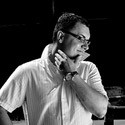
Marcin Niewęgłowski – experienced journalist working with musc media („Dosdedos”, „A-Zine”, „Pullz”), for 5 years working in Public Relations. Currently he is a head spcial communication specialist Szczecin 2016. He is also editing a blog CreativeIndustries.co
Szczecin was one of the first Polish cities in which a complex development strategy for a period of several decades was compiled. The one well known from the "Szczecin - Floating Garden 2050" slogan was based on three pillars: ecology (including the use of water) and tourism, outsourcing and IT sector. The fourth pillar, thanks to which Szczecin may fully use its potential, is betting on the development of creative industries.
Modern cities have to base their development upon the diversification of sectors that contribute to their growth. This is not only about IT sector, services (tourism), outsourcing (call centers, banking, logistics) or industry in traditional sense, but also creative know-how. Creative sector is the future of innovative economies of cities in 21st century. Also in Szczecin, year by year, it is developing more and more dynamically, even though it is not commonly attributed to this city.The rank of creative know-how increases because of the cities' search for new methods to base their prosperity on, which is founded on knowledge, above everything else. It is believed that the sales of creative industries surpass the sales of automotive industry in Europe. Their annual income in whole European Union in 2006 amounted to 32 billion euro. In Berlin, there are 24,000 of "creative" companies that employ 170,000 of people. In turn, according to the research of Culture Citizens (Polish national project for promoting culture), culture in itself and cultural industries were responsible for producing 4.5% GDP (36 386 million zlotys) in Poland in 2002.
Depending on latitude, creative sectors are defined in different ways. In USA they are called "informative industries". In turn, in Germany it is "the economy of culture" (Kulturwirtschaft) and in the Netherlands - "copyright industries". In Poland, British naming was adapted, in which creative sectors are the "creative industries". They consist of such forms of "creative" business activity as: movie, video, media (especially the so-called new media), photography, fashion, design, industrial design, architecture, publishing market, multimedia, digital entertainment, music and advertising.
"Creative industries" is a fairly new expression in Poland in itself. People started talking about the meaning of creative initiatives almost two years ago, which coincided with Polish cities' efforts to receive the title of 2016 European Capital of Culture. Szczecin has strong foundations in the creative sector - it is regarded as one of the birthplaces of graffiti art in Poland and also as a city, in which clubbing actally emerged first. Szczecin also has a rich, 35-years-long dancing tradition. Currently, this city of 400,000 dwellers has 40 dancing studios and schools. The input of Kany Theater is very important (its crew was widely awarded in Europe, for example it received "Fringe First" and "Critics Award" on the International Arts Festival in Edinburgh) for the development of theatrical scene in Poland.
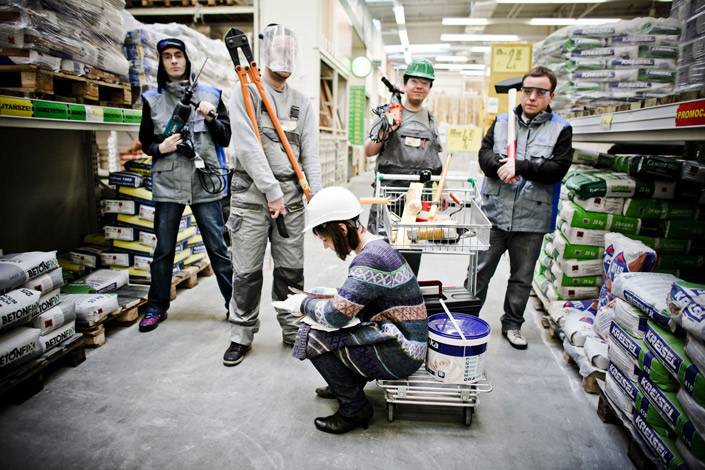
The reMMont - MM Szczecin action - refreshing the layout and navigation on mmszczecin.pl portal
The potential of creative sector is more thoroughly shown in the quantitative analysis "Culture in Szczecin - Quantitative analysis of the cultural and creative industry entities of Szczecin's Metropolitan Area", that was carried out in June 2010 for the SZCZECIN 2016 initiative. As its authors write: "Szczecin is a city with a big creative potential". The city is characterized by a huge number of advertising agencies, entities connected to photography and specialistic design (plnning and interior decoration, furniture designing, design and art studios, grafics and drawing studios, design agencies) that usually function as one-man businesses (applies to 1/3 of them). In Szczecin there are 514 advertising agencies, 137 photographic businesses and 116 entities that engage in specialist design. Moreover, there are 94 entities engaged in film, video and TV production in the Szczecin area. A characteristic feature of Szczecin, as it appears in the research materials of "Culture in Szczecin", is the existence of a large percentage of societies and informal groups that make the creative sector, which can be understood as a high level of public activity of Szczecin's dwellers.
The city is rich in music bands that work in this area - as it is shown in the "Youth Music Condition in Szczecin Report". The report states that there are over 900 bands and soloists in Szczecin. Musicality of the city is not limited just to such activity. Jimmy Jazz Records has been functioning there since 2001, and it concentrates upon releasing albums (CDs, vinyls) of bands that specialize in punk, ska, reggae and hardcore music. One of the most well known bands is The Analogs, which is popular and appreciated by for example in the Berlin punk rock scene circle. Jimmy Jazz Records, apart from being a record company, is also a publisher of alternative Polish national music magazines ("Garaż" and "Reggaebeat" in 2006-2008).
Stoprocent also leads a multisectorial activity - it is a company that started functioning in 1999, and it now focuses on production and selling of the so-called "urban" fashion that is aimed at mostly hip hop and rap fans. Stoprocent does not limit its range of products just to male clothes, it also creates a separate female brand, called Endorfina. So far the company managed to become popular not only on the Polish market (shops in Poznań and Trójmiasto), but also in Great Britain. In turn, a company from Berlin - Stoprocent GmbH, is responsible for the expansion of the Stoprocent brand in Germany. Last year, the company carried out the "Evil comes from the East" campaign. It was supposed to show an overdrawn image of Poles. Stoprocent also has a special subdivision - StoproRap - a record company. Though it deals mostly with releasing albums of hip hop bands from Szczecin (Sobota, Wini, Tony Jazzu, Sage), it is also open to cooperating with rap representatives from other countries. An example of this might be the appearance of the legendary German rap performer Kool Savas on the Sobota's album, called "Sobotaż".
In the musical sense, Szczecin is not all about punk and rap, but also about jazz. SO Jazz Records company, established in 2005, released such albums as "Jazz from Poland" by NDR Bigband from Hamburg and the legendary Polish saxophonist - Jan "Ptaszyna" Wróblewski. The publishing house, led by Sylwester Ostrowski, can evolve into a young talents forge, especially after the establishment of Arts Academy in September 2010 in Szczecin, which is focused on music education. SO Jazz Records is planning to open a postgraduate jazz studio in October 2011. There are other record companies functioning in the Szczecin are, that specialize in electronic dance music: Neuroshocked Recordings (techno), Union Recordings (drum'n'bass) and Pets Recordings (house, electro, tech house) led by Catz N'Dogs duet (one of the most fresh Polish music export goods).
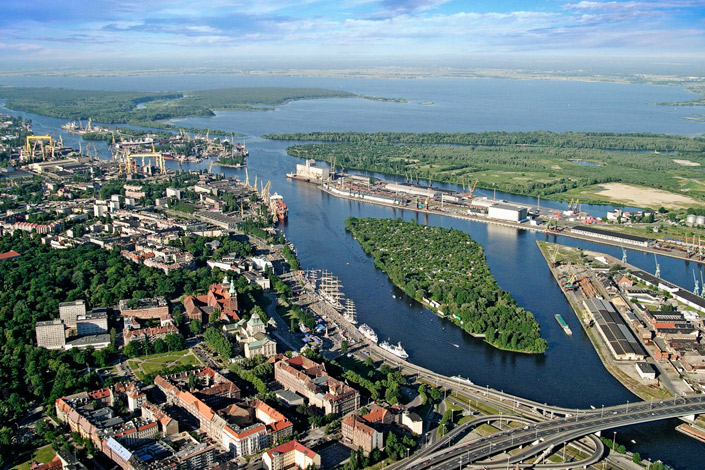
Szczecin City Hall
There are also other portals operating in Szczecin - Infoludek.pl, WSzczecinie.pl and Stetinum.pl. On average, a dozen or so of people are engaged in their creation. It may seem that all of the portals are meant for the same audience, but in fact each of them is different and has been working and developing in a different way for several years. On 1st of January 2009, the city project of Szczecin Polish Radio - Szczecin.FM, was launched. The radio station is a transboundary and multicultural project of the Euranet network. It is an enterprise that was established thanks to the initiative and financial support of the European Comission, and which now consists of 16 radio stations, 8 accompanying stations from 15 European Union countries. Szczecin.FM team consists of several dozen of people producing radio programs not only in Polish, but also in German, English and Spanish. And what is also very important - its funding comes mostly from European projects.
But the biggest achievement in the field of technology and new media belongs to the Filestube.com startup. This multimedia internet browser (established by the Red Sky company from Szczecin, that has only several members) in just 3 years of its functioning, has become the first Polish network project that conquered the very tough American market. What is more, Filestube.com, according to the data from Google Ad Planner from October, was found on the 81st place among the most often visited websites in the world, with the number of 24 million of new, unique members each month.
Szczecin also has some printed magazines that focus on very different topics: city lifestyle ("Prestiż"), culture and journalism ("Sic!"), information and culture ("Echo", "Hot Magazine"), business ("Świat Biznesu", "Zachodniopomorski Przedsiębiorca"), comic books ("Znakomiks") and literature ("Pogranicza"). The "Pogranicza" bimonthly has been issued for 15 years, and is managed by Inga Iwasiów, whose novel entitled "Bambino" was nominated for the "Nike" Award in 2008, which is one of the most prestigious Polish literary awards.
Creative industries also include various types of publishing houses. For 4 years, Japonica Polonica Fantastica - the oldest Polish publishing house, specializing in Japanese manga, has been working in Mierzyno, next to Szczecin, Many books of the literature category of Wydawnictwo Forma were nominated for not only Polish awards (2 "Nike" nominations in 2009), but also European ones (2 nominations for European Literary Award in 2009). Another very important publishing house is Wydawnictwo Walkowska, which was established in 1998, which deals mostly with publishing albums, CDs and books related to Szczecin and Pomorze Zachodnie region.
It is no surprise that design has many faces in this city, mainly because the creative sector is so diverse. Fashion is not the only significant industry, but the Fashion Week &, which has been organized in Szczecin for 10 years, has become the most important event in the Zachodniopomorskie Voivodship. During this event, the newest creations of Polish and foreign fashion designers are presented. It is also accompanied by Gryf Fashion Show - a contest for fashion practitioners. During spring-summer and fall-winter editions one can find out what is trendy and stylish.
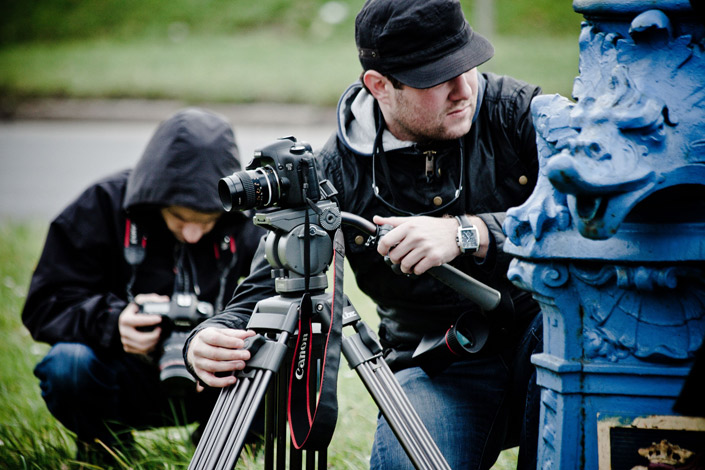
Black Solid Pictures Crew
The work of Kwark brand proves the long-term fashion tradition in Szczecin. The company with 16-year-long history focuses on making sport clothing and underwear, with the use of the most technologically advanced, synthetic materials that have the most original patterns. These fibers surpass the properties of materials of natural origin. Just like Stoprocent, Kwark is one of the few Polish brands, which are recognized on the German market. The company from Załom provides clothing for German canoeing national team. The line of Kwark clothing was also presented during prestigious fashion fairs, such as Fashion Galery on CPD in Dusseldorf, Manhattan Fashion in New York or Atmosphere on Prêt à Porter in Paris.
Style is not only expressed through original clothing, but also through esthetic needs for having a non-standard kitchen, bathroom or furniture. TREND Łazienki company specializes in realization and executing such projects, and it employs architects who deal with interior decoration. The most well known specialist - furniture designer from Szczecin - is Maciej Karpiak. The owner of Office For Design studio created designs for Hugo Boss shops, and in 2003, as a first Pole, presented his creative achievements during Salone Satellite in Milan. Moreover, he is regarded by many people in Poland as the most fulfilled national designer from the young generation. During 6 years of the existence of his studio, Maciek Karpiak created his own furniture brand - Zionee.
Design allows for experimenting with different domains that do not have much in common with this notion. Because what possibly can design and a bicycle have in common? Well, it turns out that what they can have in common is lots and lots of very interesting outcomes. An example of this might be work of Biker company. It was established in summer last year, and besides being a storage unit and a service point, it also plays the role of an artistic workshop. The owner of this small company - Ryszard Horoszko - changes bicycles into real works of art. What is most important is the fact that it joins a passion and a way of making money together.
Jewelry that used to be associated with class membership, prestige and wealthiness, changes its role and use. It becomes a symbol of individualism and distinguishes itself among the others. The most well known specialist in the field of designer jewelry in Szczecin is Andrzej Małyska - the owner of Galeria Soraya. His last collection was presented last year on Sopot Fashion Days and received many enthusiastic reviews, which appeared for example in Italian informative agency - "Ansa" and on Japanese, Spanish and Italian internet portals.
Westival - Sztuka Architektury, organized in Szczecin for 4 years, is a festival of some aspects of art in architecture - it is worthy to mention that it is the only event like this in Poland - and it is also very much connected to the industry dealing with urban notions. Some of the most popular architectural studios are - City Architekci, Orłowski-Szymański, Studio.AG and Mellon Architekci. The last studio is known thanks to the realization of the "West coast architecture" project, whose aim was to create apartment buildings, culture centers and halls on the seaside line of land from Świnoujście, through Kołobrzeg and Mielno, to even Stockholm and Koszalin.
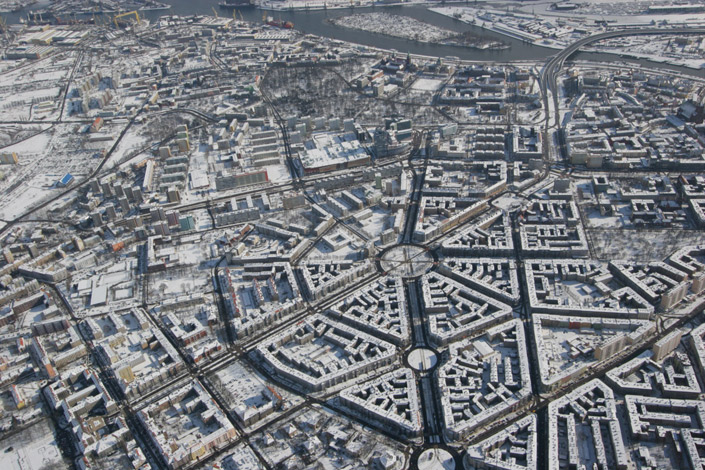
Szczecin City Hall
If we were to judge, which branch of the creative industries in Szczecin may pride itself on the longest lineage, it would certainly be photography. Its symbol is Krystyna Łuczywek - an artist and photographer with over 60 years of experience (an author of 1000 articles in photography press), who is a representative of Poland and the International Federation of Photographic Art (FIAP) lecturer. Artist's achievements were acknowledged in November last year by the Ministry of Culture and National Heritage, which awarded her with the Gold Medal "Zasłużony Kulturze – Gloria Artis".
Modern photography from Szczecin is not only about well-known agencies, but also famous personalities - freelancers. There are many of the first ones on the market - it is worth mentioning for example Foto Art Pro (30 years of tradition), Miseko, Photographica Nova or M&G Team. The last one is a photographic studio established few years ago by Grzegorz Skorny and Miguel Gaudencio (famous in Europe Portugese director, currently living in Szczecin), which brings together many prominent photography fans from this city. In turn, the most famous photographers, who are freelancers, are: Cezary Skórka (specializing in aircraft photography), Radek Kurzaj (author of photos in many magazines, for example: "Voyage", "Audrey", "Architectural Record", "Gazeta Wybocza"; many of his albums published in USA became bestsellers) and Bartosz Mateńko (one of the most talented photographers of the young generation, who has published his photos in some most importand Polish media, like "Newsweek Polska" or "Polityka", and some photos for well-known brands, such as Redbull). It is worth to mention that each year someone from Szczecin participates in annual Grand Press Photo events - one of the most important Polish press photography contests.
In Szczecin there are also many entities that deal with the broadly understood term "video", digital entertainment and interactive creations. The most popular one is probably Fader Production - Andrzej Fader's studio, who has been a cultural journalist for a very long time. He realizes projects for Szczecin's cultural institutions, festival organizers, media and private companies. The ventures of Wielkopomorska Wytwórnia Filmowa have musical and social character. Krzysztof Kuźnicki's studio makes music videos for bands from Szczecin and projects for Monar - the biggest (and also one of the biggest ones in the world) non-governmental organization that fights with drug addiction, homelessness and social exclusion.
Black Solid Pictures, established by four fans of combining photos and movement together - Sebastian Mucha, Paweł Sroka, Paweł Sobolewski and Remigiusz Pilawek, is also a very creative studio. The owners expand their creative portfolio successively - from the co-production of a commercial for Polish Deaf-Mute Association "Migaj z nami" (in which participated some dancers from the Polish edition of "You Can Dance") and creating music videos for bands from Szczecin (such as Łona & The Pimps and Sin City Tribe) to commercials for both local companies (Unity Line) and international ones (Calvin Klein). Currently, the biggest project of Black Solid Pictures is the co-production of "Desire for Beauty" movie. The movie, by Miguel Gaudencio, which was previously filmed in Szczecin and Warsaw, is supposed to be about fresh and unknown to the broader audience topic - plastic surgery industry in Poland. Another examples of entities from the creative sector in this area that work in Szczecin, are Music and Film Campaign "Mufi" and Filip Tumczyszyn's studio - GenuineCinematics (GCM) - famous for clip production for some Polish hip hop performers.
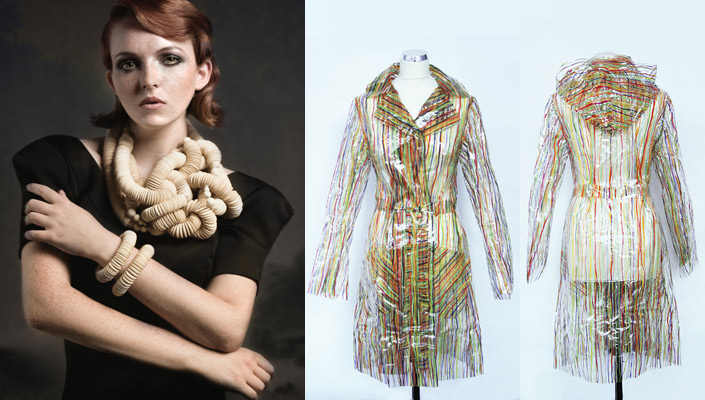
On the left: Andrzej Małyska jewellery
On the right: "Fanfaronada" - Daria Salomon's fashion studio and one of her designs - raincoat
The development of creative sector dealing with this form of entertainment in Szczecin has also its roots in the city dwellers' interest with this topic. In November 2010, first digital entertainment fair took place in Szczecin - Szczecin GameShow. This event was very popular, the fair attracted 12,000 visitors in just two days. Szczecin GameShow turned out to be a bigger success than an event taking place in Warsaw - ON/OFF Fair. The owners of u.studio agency (creators of this event and organizers of Fashion Week & in Szczecin) admit that their main intention is to create a venture that could compete with Gamescom - the biggest digital entertainment fair in Europe, taking place in Leipzig each year. We can see if they will achieve their aim soon, in May, when the second edition of Szczecin GameShow will take place in this city.
The boundaries of creative sector are very fluid because they meet on the borders of IT, culture and tourism. This is also the case of Szczecin's company GO 360 that creates virtual, panoramic 360-degree tours. So far, it realized project not only in the Zachodniopomorskie Voivodship, but also on the other side of Odra (for example Stralsund City tour or Ueckermünde Zoo tour). In turn, some famous agencies dealing with advertising and marketing from Szczecin belong to the circle of well-known entities of the creative sector: Max Von Jastrov, Bono and Oskar Wegner.
According to the development strategy of Szczecin's brand, "Floating Garden", one of the pillars are issues regarding the revitalization and reorganization of the urban space. According to the architects and urbanists environment in Szczecin, special care should be devoted to the northern districts of Szczecin (Gocław, Skolwin, Stołczyn) and the city center (Śródmieście). This problems should be solved thanks to the project issued by the City Council of Szczecin on 27 September 2010, called "Local Program of Revitalization for the City of Szczecin", which was created as a part of the Regional Operational Program of Zachodniopomorskie Voivodship for the years 2007-2013. It is a part of the JESSICA venture (Joint European Support for Sustainable Investment in City Areas). The main of this long-term program is "enlivening" (in the social, economic and infrastructure perspective) the degraded spaces with big historical value, which are characterized by the high level of appearance of negative social phenomena (unemployment, crime, social exclusion). "Local Program of Revitalization for the City of Szczecin" has to be supported by animation and culture projects, which are supposed to be coordinated by an entity that will be established on the basis of SZCZECIN 2016 institution database. It will be an opportunity for the representatives of the creative sector in Szczecin.
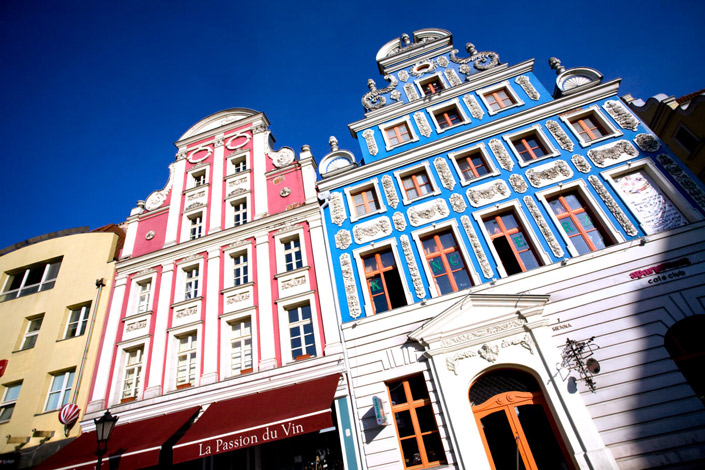
Szczecin City Hall
Creative industries are a notion relatively young in Poland, and that is why this creative market is almost not recognized at all yet. There are some plans for conducting, together with the Northern Economy House - the biggest economy house in Poland with its headquarters in Szczecin, precise analysis and evaluations of the whole creative sector working in Szczecin. It will be a pioneer operation on a national scale.
This innovative, cultural and creative branch of economy needs special conditions to spread its wings. One of these conditions is educated staff, full of individualists and unconventionally creative minds - in the case of Szczecin it will be mostly derived from the graduates of the Arts Academy. The second element are enterprise skills. As it can be seen in the interview with Dariusz Więcaszek for "Głos Szczeciński" (Northern Economy House director) that was carried out in November, the most resourceful people live in the region of Zachodniopomorskie Voivodship. In the respect of the number of companies falling on one thousand of city dwellers, this indicator amounts to 127 in this voivodship, while the national average is 98,1. The attitude of the authorities towards the creative sector is also very important. Taking into consideration the "stocktaking" plans of the creative industry in Szczecin, with the support of Northern Economy House (and, at the same time, promoting it as a key branch of economy for cities' development), position of this sector in Poland may change diametrically, thanks to the changes which will begin on the western borderlands of Poland.
Marcin Niewęgłowski - SZCZECIN 2016 social initiative main communication specialist, CreativeIndustries.co blog owner
Check the archive
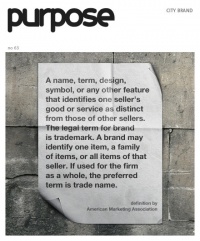
no 63 February 2012
theme of the issue:
CITY BRAND
< spis treści
Article
From editors
Presentation
Montreal – creativity, originality and diversity
Career in Culture
Creativity centre - interview with Muhd Hanafiah - Agnieszka Furmańczyk
Culture Industries
Strong brand "phenomenon" - Paul Alezraa
On the Margin
Creative Szczecin, renewed - Marcin Niewęgłowski





